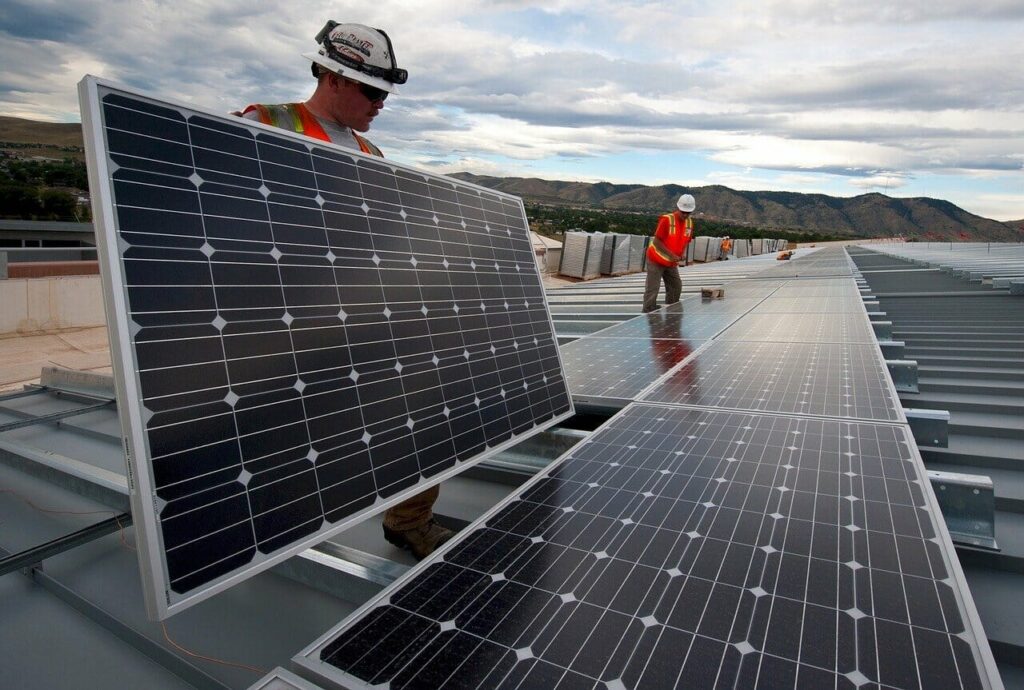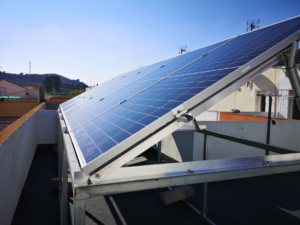Nuevas tarifas de la luz 2021 ¿Cómo me afectan los nuevos horarios?
Desde hoy, 1 de junio, habrá tres tramos horarios y dos potencias
Las tarifas de la luz cambian el 1 de Junio. Desde hoy, habrá tres tramos horarios y la posibilidad de contratar dos potencias. De los tres nuevos periodos, valle, llano y punta, el más barato será el valle, desde las 12 de la noche hasta las 8 de la mañana entre semana y todo el día en fines de semana y festivos nacionales. Como consumidor, te conviene conocer bien los diferentes tramos para que puedas adaptar tus hábitos de consumo a ellos y valorar si te interesa pasarte al autoconsumo para multiplicar tu ahorro.
¿Cómo se calcula el precio de la luz?
Para entender cómo te van a afectar los cambios en las tarifas, primero debes entender tu factura de la luz. La factura incluye todos los costes necesarios para que la electricidad llegue de forma continua hasta tu casa. De esta forma, podemos entender que el precio de cada kW/h que consumes incluye:
- Tarifas de acceso: que son la suma de:
- Peajes, que cubren los costes de transportar y distribuir la electricidad hasta tu casa. Son precios fijos que los establece a Comisión Nacional de los Mercados y la Competencia.
- Cargos del sistema eléctrico, que son los costes derivados de la actividad de las eléctricas, como las primas a las renovables, los costes de cogeneración y residuos o la compensación por el déficit acumulado en años anteriores al no recaudar lo suficiente para cubrir estos gastos. Estos precios fijos los marca el Gobierno.
- Costes de producción: Lo que cobran las empresas por producir energía y venderla al por mayor. Estos precios dependen de la demanda de energía del momento, del tipo de centrales que estén produciendo esa energía (hidráulicas, de gas, nucleares, solares, etc), de los pagos por capacidad o las pérdidas del sistema. Son precios variables que dependen de varios factores.
- Margen de comercialización: Incluye los gastos de gestión que hace tu comercializadora por encargarse de la facturación de tu consumo más su margen de beneficio. De nuevo, es un gasto variable que depende por entero de las empresas comercializadoras.
- Impuestos: Aparte del IVA al tipo general, la electricidad soporta también un impuesto propio del 5,112%.
En cuanto a los cargos que soporta la parte fija del recibo, la que se refiere a la potencia contratada, son muy similares a los de la parte variable. Incluye los peajes y cargos y, cuando se trata de tarifas reguladas PVPC, se pueden incluir en esta parte los márgenes de comercialización.
¿Qué cambia con la nueva tarifa de la luz y por qué?
Porque después de negociar con el Gobierno, la responsabilidad de fijar los precios de los peajes (transporte y distribución de la electricidad) la tienen las comercializadoras. El Gobierno aceptó su propuesta de modificar los peajes para optimizar el uso de la red eléctrica, penalizando más el consumo en las horas de mayor demanda para compensar el estrés al que se someten las redes en esos momentos.
Para poder aplicar estos cambios en los peajes se han modificado también los cargos que regula el Gobierno, que han decidido aplicar la misma estructura de tramos horarios que la CNMC.
Junto a la modificación de los precios de la electricidad de acuerdo a los tramos, también se modifican la posibilidad de contratar dos potencias diferentes para los períodos valle y punta, de forma que puedan ajustarse a los hábitos de consumo.
Estos cambios se aplicarán a todos los contratos de electricidad de menos de 15kW de potencia contratada, lo que afectará a la gran mayoría de hogares y a muchas pequeñas empresas. Con este cambio de tarifas, desaparecen las antiguas 2.0 A, 2.0 DHA, 2.0 AHS y 2.1 y son sustituidas por la nueva 2.0 TD.
Nueva tarifa de la luz. Nuevos precios
La nueva tarifa 2.0 TD aplica nuevos precios al consumo en función de la hora del día. Estos son los nuevos tramos:
- Punta (P1): de 10-14 h y de 18-22 h de lunes a viernes.
- Llano (P2): de 8-10 h, de 14-18 h y de 22-24 h de lunes a viernes.
- Valle (P3): de 0 a 8 h los días laborables y las 24 horas de los sábados, domingos y festivos nacionales.
NUEVOS HORARIOS PARA LA NUEVA TARIFA 2.0 TD

Estos nuevos tramos no coinciden con los antiguos, así que si tenías una tarifa con discriminación horaria fíjate bien en los nuevos horarios y sus precios.
La novedad más destacable que trae este cambio de tarifas es la aplicación del tramo valle a las 24h de los sábados, domingos y festivos, por lo que consumir en fin de semana saldrá mucho más barato que hacerlo durante los días laborales. En total habrá 88 horas valle a la semana, el 52% del total. Con esta nueva tarifa se pierden las horas valle de las mañanas laborables, pero se añaden 48 horas los fines de semana. Esto afectará sobre todo al consumo de electrodomésticos que estén conectados de forma permanente, como los frigoríficos.
Las horas más caras se concentran ahora en dos tramos de cuatro horas cada uno, las mañanas y las tardes de los días laborables, entre las 10 y las 14 horas y las 18 y las 22 horas. Esto supone que habrá un total de 40 horas punta a la semana, que coincidirán con las horas de mayor consumo en los hogares. Durante estas horas los precios son mucho mayores que en los otros dos tramos, por lo que para poder ahorrar, deberás tener muy presente qué consumo harás en las horas punta.
Dos potencias, más barata por la noche
Contratar la potencia adecuada para tu hogar no es algo fácil. Si contratas demasiada, acabarás pagando de más por los costes fijos asociados a la potencia. Si, por el contrario, te quedas corto en potencia, el automático saltará cada vez que conectes varios electrodomésticos. Hasta ahora solo se podía contratar una potencia para todo el día, lo que complicaba poder ajustar la potencia al consumo.
Gracias a los nuevos contadores será posible contratar una potencia diferente para las horas valle (de las 0:00 a las 8 h en días laborables y el día entero si es sábado, domingo o festivo nacional) con un precio más barato. De esta forma podrás contratar mayor potencia para utilizar los aparatos más potentes en las horas valle. Esto beneficiará en gran medida a los propietarios de coches eléctricos, que podrán cargarlos por las noches a un coste más bajo de lo habitual.
Con el fin de ayudarte a elegir la potencia que más te convenga según tus hábitos de consumo, las comercializadoras te informarán de cuando has tenido los picos de potencia máxima durante el último año.
Hasta mayo de 2022 se podrán hacer dos cambios de potencia gratuitos, para ajustar la que quieres contratar en hora valle y punta.
Bajan los costes fijos. Sube el precio de la energía consumida
Unos conceptos suben, otros bajan y, al final, nos encontramos con muchos cambios pero no sabemos como nos van a afectar en la factura.

Baja el precio del kW contratado
El kilovatio contratado baja un 16%. Esto quiere decir la parte fija de la factura, baja. Un hogar con menos de 10kW de potencia contratada y que decida no cambiarla, pagará por ella hasta un 16% menos. En el caso de que tuviera entre 10 y 15 kW la rebaja será aún mayor, de hasta un 28% en los costes fijos.
Por ejemplo, un hogar que subiera su potencia de 3,3 a 7 kW para facilitar la carga rápida de un coche eléctrico pagaría 339 euros al año con el antiguo sistema, mientras que con el nuevo, aprovechando que puede incrementar la potencia solo en horario valle, serían 135 euros al año, contratando los 7 kW solo para ese horario.
Fuente OCU
Sin embargo, esta rebaja en los costes fijos se verá compensada con el aumento del precio de la energía consumida, por lo que beneficiará en mayor medida a quienes hagan consumo bajos pero perjudicará a quienes hagan consumos elevados.
Sube el precio del kWh
El kilovatio hora sube hasta 9 céntimos en los tramos punta. Por peajes y cargos se pagarán 0,133118 euros por kWh que, añadidos al propio coste de la energía, llevarán el precio de cada kWh a más de 20 céntimos antes de impuestos (en torno a 25 céntimos el precio final). El horario llano ofrece a cambio unas tarifas similares a las actuales para un hogar que no tenga discriminación horaria. En horario valle cada kWh será un poco más caro que ahora, algo que habrá que compensar trasladando consumo al fin de semana.
¿Sube la factura de la luz?
Depende de la tarifa que se tuviera contratada antes del cambio.
Un hogar medio con una tarifa 2.0A con 4,6kW de potencia contratados y un gasto de 3500kWh al año, verá reducida su factura con la nueva tarifa de la luz en unos 2 euros mensuales.
Un hogar con una tarifa con discriminación horaria 2.0A DH y la misma potencia y consumo que en el ejemplo anterior, gastará 34 euros de media más al año.
Los grandes beneficiados son las pequeñas empresas y los hogares con potencias contratadas de 10 a 15kW, que verán como se le reduce la factura en los conceptos de costes fijos.
Preguntas frecuentes sobre la nueva tarifa de la luz
Todo va a depender de tus hábitos de consumo y de cómo organices tu gasto energético. Si tu consumo se centra en las horas punta, sin duda pagarás más en tu factura. Si puedes trasladas la mayor parte de tu gasto a las horas valle de las noches y los fines de semana, puedes llegar a ahorrar.
Existen tres horarios: Punta, cuando la luz es más cara: llano, con un precio medio, y valle, cuando luz es más barata. Pagarás menos por la luz durante las horas valle, que van de las 00:00 a las 08:00 de los días laborables y las 24 horas de sábados, domingos y festivos nacionales.
No, pero si es aconsejable que lo hagas porque puede suponerte un pequeño ahorro extra durante las horas valle. Si no quieres cambiar la potencia contratada no hace falta que hagas nada, pero si quieres hacerlo, debes hablar con tu comercializadora. Tienes dos cambios gratis para que puedas dar con la combinación que mejor se ajuste a tus hábitos de consumo.





